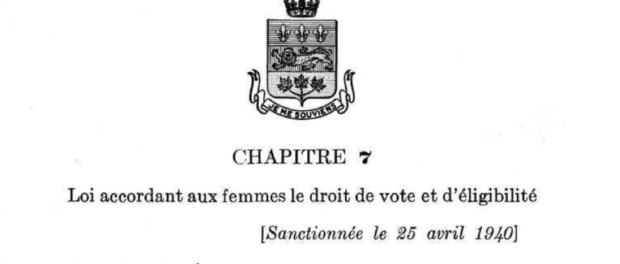1940: Votes for Women & Other Quebec Curios
Part of “Shadows and Revolution”, 1900-1960
Shortly before the end of World War I, certain groups of women were able to vote in federal elections, on the condition that they were working for the military or a male relative was working in the military. By 1918, women who were twenty-one years old and over were able to vote in federal elections. Province by province, women were able to vote on not only for their federal government but their provincial one as well. Even friendly neighbour (and yet to be province) Labrador had granted women the right to vote in domestic elections in 1925. However, by the 1930s, Québec women still could not vote provincially, even though they were able to vote for a federal leader.
Opposition for women’s vote came from both men and women. The traditional view was that a woman was a homemaker and a mother. People who did not believe that women should vote because it would break these traditional societal structures. These beliefs were engrained in law: as far back as the codification of civil law, women were incapable of dealing with their property by themselves and had to have male guardians approve of and make decisions in their place.
Adélard Godbout had negotiated with the Catholic Church before and even convinced them to be on his side on matters such as the very first laws that permitted worker-patron relations in labour law and compulsory education until the age of fourteen. On this matter, however, the Catholic Church refused. Particularly in the Catholic French-Canadian communities, there was resistance, with the roles of men and women reinforced within the religious structures and its teachings. Godbout’s law permitted women to vote and even run for office in provincial elections, two things that took things too far away from traditional gender roles and were unable to be reconciled or rationalised by authorities.
Though Godbout’s law permitted the women’s vote in provincial elections, there would still be work to be done. Federally, Aboriginal and Inuit women were unable to vote, being considered wards of the federal government. In additional, Asian women would not be able to vote federally until after the Second World War. Though not formally excluded from the vote, Black women would be discriminated due to their race and their gender. It would only be in the 1960s that all women would be able to vote in both levels of government.
The first woman that Quebecers elected to office would be over twenty years after the Godbout government passed their law, Marie-Claire Kirkland-Casgrain, in 1961.





